
Gameloft's The Oregon Trail is a fun time-suck
We were sad when Nora died. We'd enjoyed spending time with her for over a month, across a journey of several hundred miles, she'd proven herself to be the best of people.
A missionary by trade, Nora was kind and competent. She could negotiate a bargain, tend wounds, and find her way through the wilderness.
Essentially, Nora was the glue that held the group together. She was its lynchpin, and once she was gone - buried beneath a randomly generated epitaph after succumbing to afever after an infected wound - the party disintegrated.
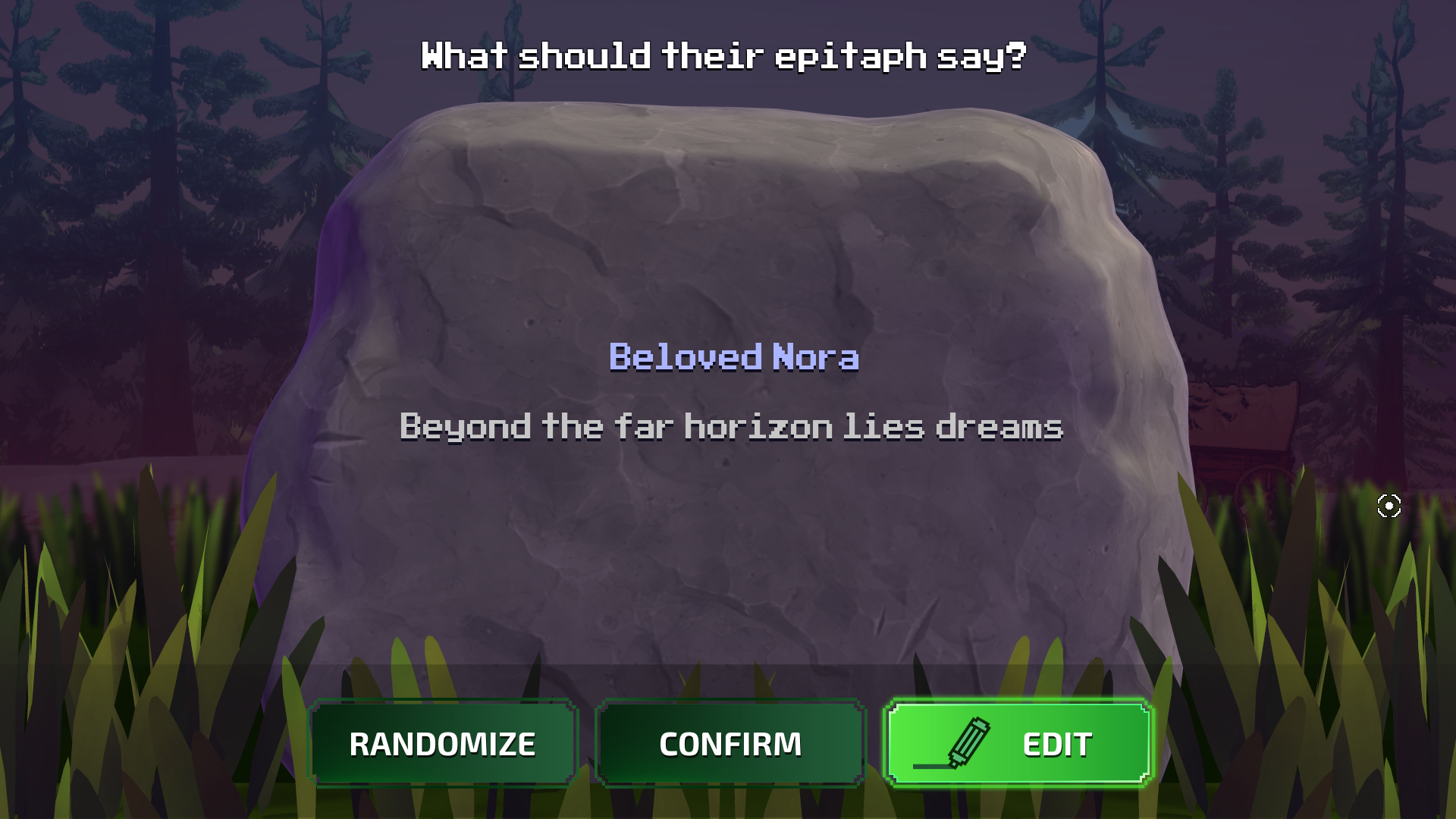
Elias died from a self-inflicted gunshot wound; Daisy was washed away downstream while fording a river; John was run over by his own wagon.
The Oregon trail traces a path through US history
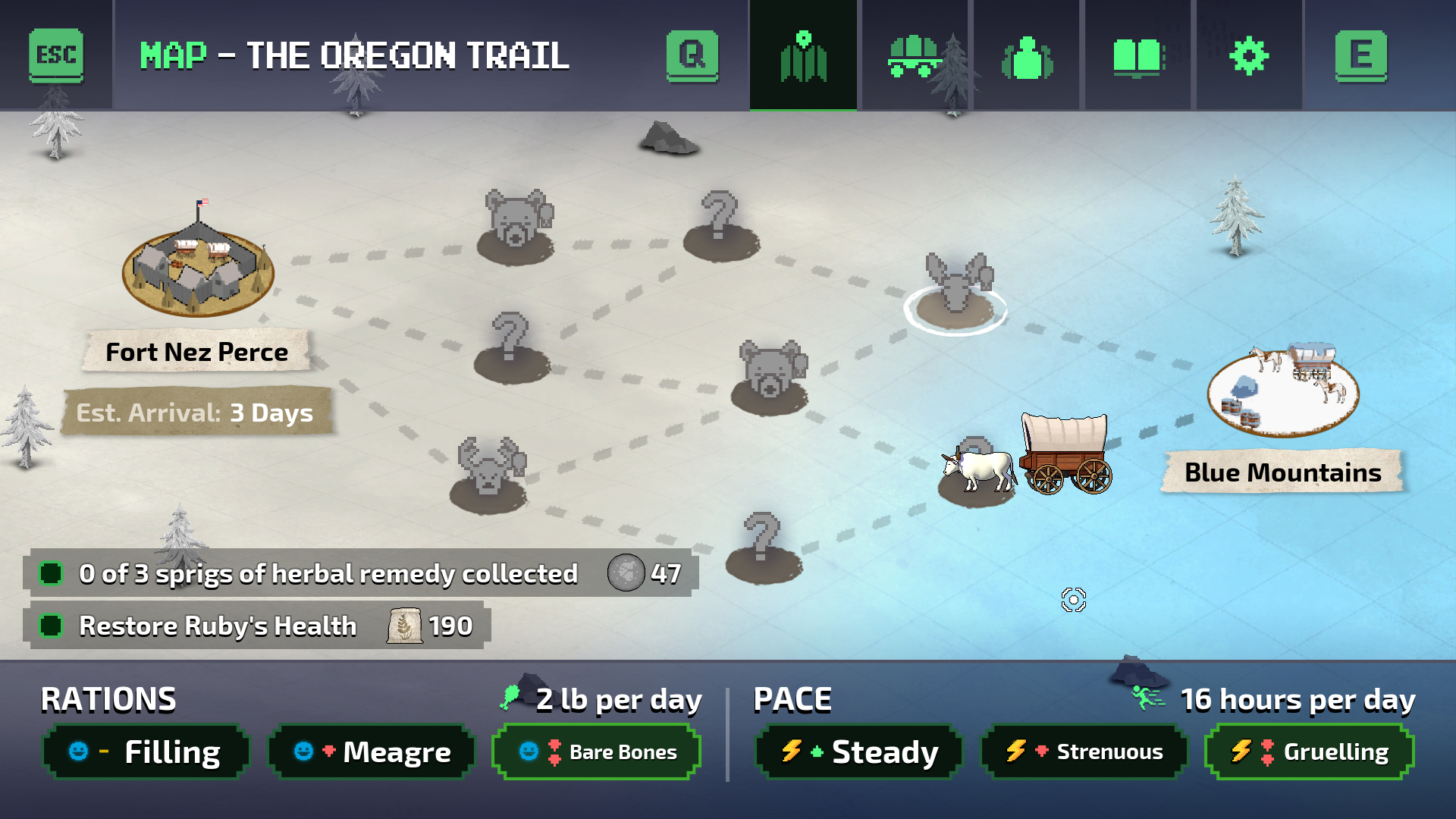
If you're over the age of 40, you've probably played The Oregon Trail before. It was created in the early 1970s as a way of engaging pre-adolescent schoolchildren with the harsh realities of life on the pioneer route from the misery of Missouri to the promised land on what would later become the US east coast.
The game mechanics are simple. It's essentially a mix of lightweight management sim, and a series of minigames you play to keep your party alive through random and fixed events as you travel between objectives on a map.
Starting in the town of Independence, you pick your party members, buy a wagon and supplies, then set off on your journey westward.
You'll choose what route to take, and need to make decisions on how to survive. Clean shirts, medicine, and harmonicas will keep the party hygienic, healthy, and happy but take up space in the wagon. They'll also disappear as they're used, and become damaged as your wagon cover decays. Wagon repair kits are in short supply once you hit the trail, but can be bartered for at major landmarks and forts.
While you start off with some basic foodstuffs, you'll need to kill to survive once you're away from civilization: hunting requires bullets (and a knife if you want to keep the pelts); fishing requires bait. The result is a bunch of fun minigames that serve to keep you alive, while providing tradeable resources. There are other random encounters and minigames, too, but we'll leave them as a surprise.
Pixels and parallax on the Oregon trail
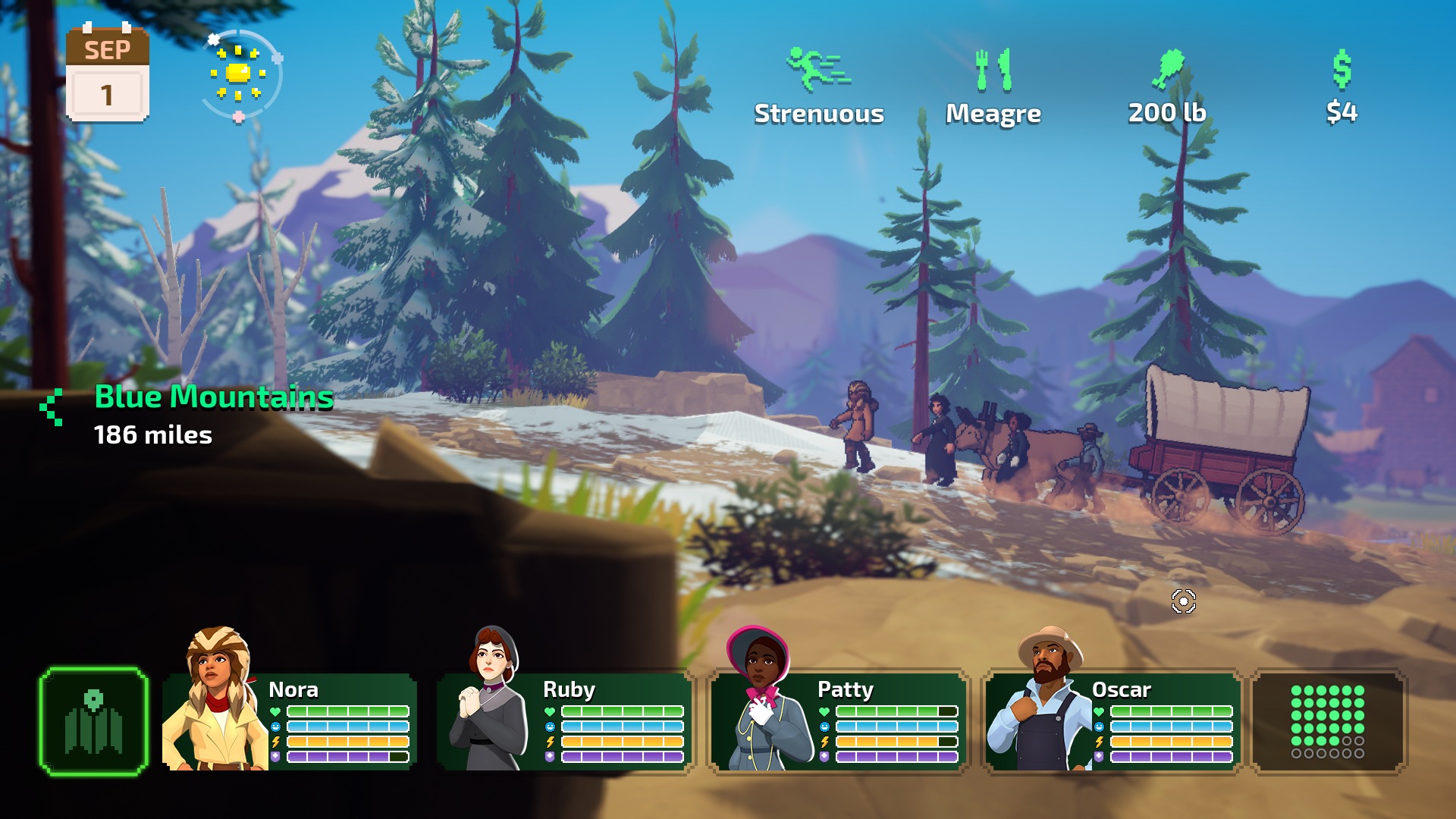
Being created to run on HP 2100 minicomputermore than half a century ago, Oregon Trail graphics were rudimentary to the point of non-existence, and later versions weren't much better - even as they leaned towards colour, and figures that could be recognised as human. Or a Wagon. Or a bird.
The most recent iteration of the game acknowledges this heritage with a distinctly pixel-art style, and sprite animation that you think you remember from the 1990s, but which is actually much, much, better.
The trail moves beneath your feet, with the characters and their wagon staying more-or-less centre screen, but you can really get a sense of distance travelled thanks to parallax scrolling - meaning that the background, middle, and foreground move at a different rate.
For a pixel art style retro gaming experience, this is perfect, and harks back the late 1990s and the days of the Amiga 1200 (for which The Oregon Trail was never released).
Minigames are simple and fun, and with the kind of no-clip action you'd expect from pre-millenium platforms.
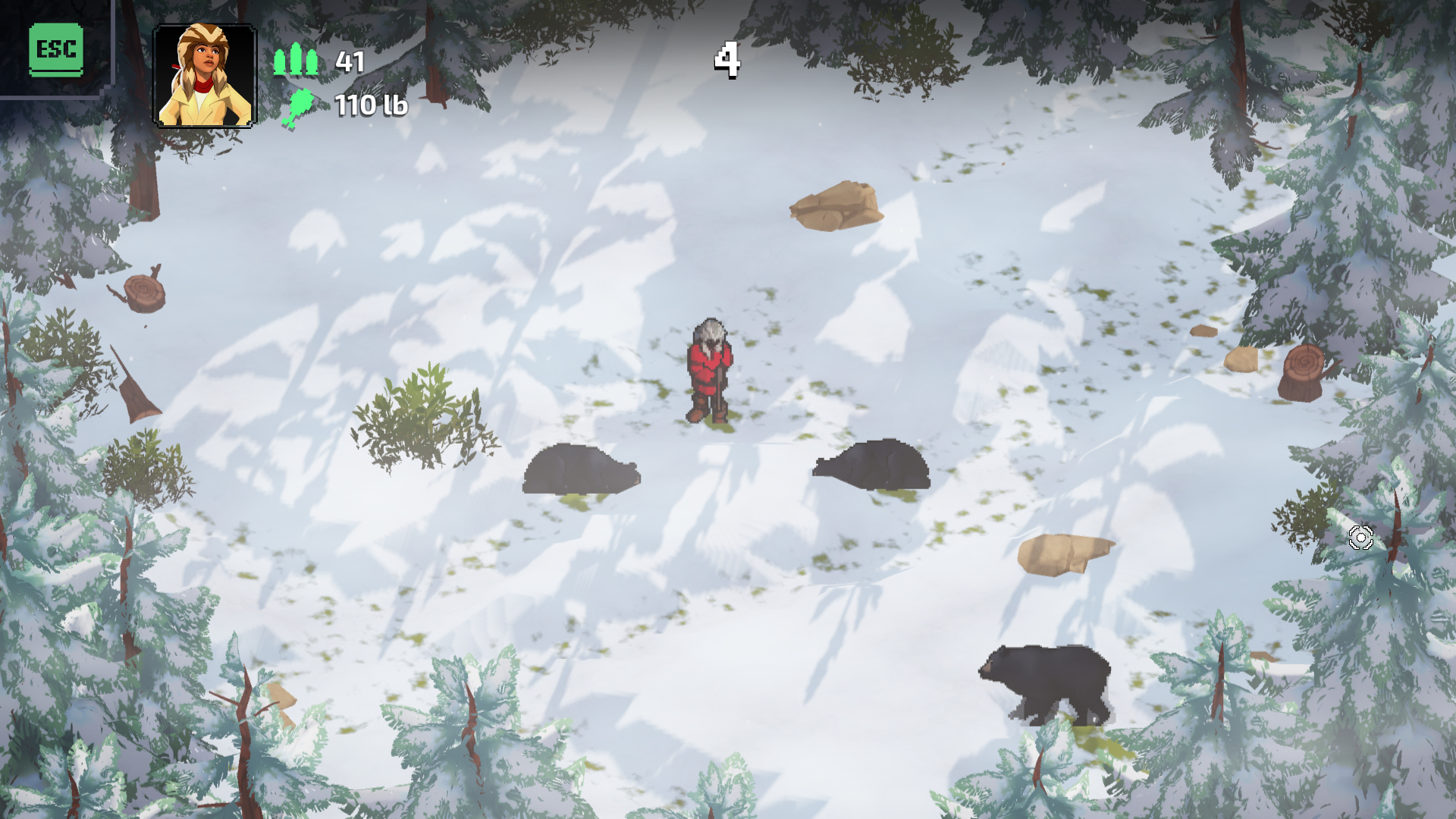
Landmarks, forts, and campsites, are all beautifully drawn, coloured, and animated, and the game is overflowing with factual tidbits, historical information, and fun anecdotes. You can "collect" animals by clicking on them as they appear on your route, and you'll actual learn stuff as you progress through the game.
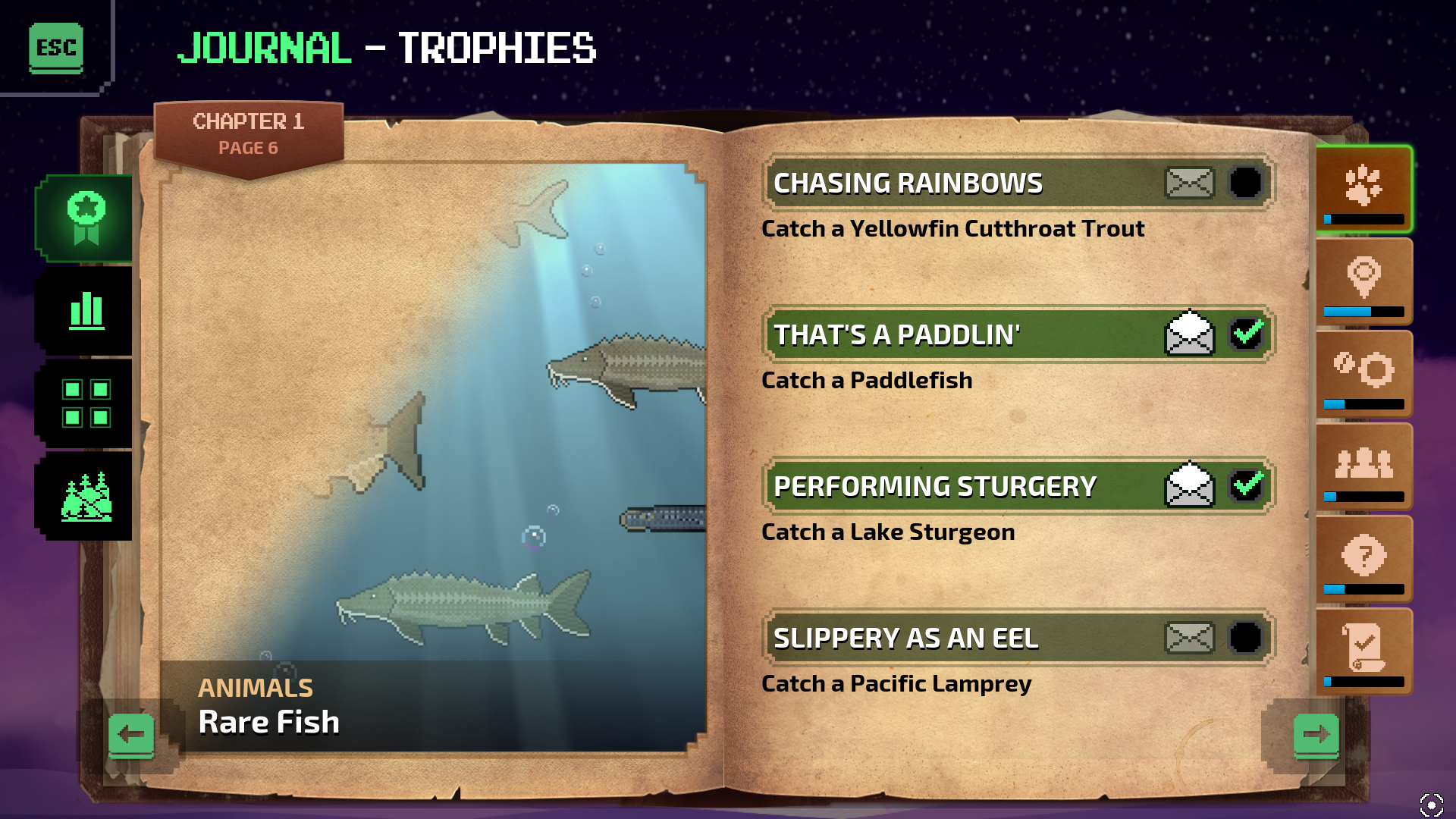
The 2022 version of the Oregon Trail is produced by Gameloft in Collaboration with the publisher Harper Collins, using the Unreal Engine.
Different American perspectives

The Oregon Trail is a history of the great American expansion, and through most of its history of has been an interactive storytelling experience of white men and women heading west.
This version is different. In addition to a variety of trails and seasons you can traverse as the ever-marching face of expansion, you'll also get to play as the people who were originally there. On Winter Migration trail, for instance, you'll take the role of a Native American mother and son, who must reach the hunting grounds before winter sets in. Unlike the main game, you won't have a wagon, and consequentially, very little room for provisions.
This isn't the only nod to the diversity of people populating the old west. While your party may be composed of racially diverse characters, Conversations with NPCs will tell you that Black people won't be permitted to settle in Oregon. May as well stay at home. Right?
The Linux Trail
Similar to the Oregon Trail itself, getting to Oregon on Linux isn't quite as simple as hopping on a train or plane to your destination.
Despite the many platforms for which the game has been published over the past half-century, it has never been officially made available for Linux.
This doesn't mean it's difficult to install or run, though. Gameloft's The Oregon Trail is available on Steam or DRM-free on Gog for £24.99.
In the former case, you'll be able to use Steam's Proton to play the game, and in the latter case, we installed and launched with the Heroic Games launcher for flawless performance.
£25 is a high price for a game that's changed little over the past 50 years, but there's a huge amount of additional content, and even the main trail will keep you occupied for more than a day.
There are games even older than The Oregon Trail
If the Oregon trail has you yearning for the simpler gaming experience of years gone by, but you don't have a time machine (or an emulator) to hand, you can try out Colossal Cave Adventure - the first text adventure game ever made.













